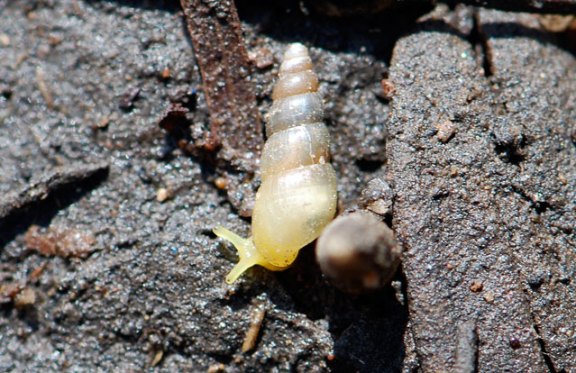Ladybugs have been crawling on the header of our blog since we started here at Growing With Science, but we’ve never featured them for science activities. That’s why we were inspired when we found the picture book Ladybugs by Sian Smith.

 (affiliate link)
(affiliate link)
With rhyming text, this book for the youngest reader covers many ladybug basics, and especially works hard to dispel some of the myths you might hear, such as that the number of spots on a ladybug reveals its age (it doesn’t, but it might tell you what species it is!) For a full review, see Wrapped In Foil.
Ladybugs?
Ladybird beetles?
Lady beetles?
Are ladybugs bugs or beetles? How do you tell?
We’ve talked about “true bugs” before. Those are bugs with a triangle in the middle of their back, sucking mouthparts that form a tube, and wings that are half leathery and half membranous. The beetles, on the other hand, have hard and often shiny top wings (called elytra), and they have chewing mouthparts called mandibles.

(Lady Bug Face by Robert Kraft)
Ladybugs are in fact beetles. Entomologists like to call them “lady beetles” to be more accurate, but the name ladybug seems to have stuck.

(Illustration from Wikimedia)
Lady beetles fly with their underwings that are membranous and are usually folded up under the elytra when the beetle is not flying.
Activity 1. Identifying:
Is it a beetle or a true bug?

A. learn the features of a lady beetle listed above. Can you decide, is the insect in the flower a beetle or a bug?

B. How about the insects in the photograph above? Are they beetles or bugs? (see answers at end)
Do you know why these insects are red and black?
Red and black are warning colors in insects. Insects use strong red and black or yellow and black colors to signal to potential predators (birds, for example) that they are defended either with chemicals or a sting. We know that ladybugs don’t sting. So, why are they red and black? (See number 5 below)
2. Ladybug Life Cycles:Â Complete Metamorphosis
Beetles undergo complete metamorphosis, which means they pass through four stages:Â eggs, larva, pupa and adult.

Ladybug eggs look like tiny orange footballs. Female ladybugs lay their eggs in patches, often near aphids or other sources of food.

The eggs hatch into larvae. Ladybug larvae look somewhat like miniature alligators. This is the larva of the multicolored Asian lady beetle, Harmonia axyridis.

See that orange and black lump on the underside of the leaf? That is a ladybug pupa. Inside the larva is slowly changing into an adult ladybug.

Soon it will emerge like this.
Gather some paper and drawing supplies and draw a poster of the ladybug life cycle, including all the stages of metamorphosis.
3. Different Kinds of Ladybugs
Ladybugs are all beetles, but they can be a number of different shapes, sizes and colors. Take photographs and draw pictures of ladybugs you find outdoors. Learn what different kinds live in your area.

Some are black with red spots. This is called the twice-stabbed ladybug.

Here’s one with orangy-brown spots. It is an ashy-gray ladybug. It seems like the wrong name, but it turns out that members of this group of ladybugs can look very different from one another even though they belong to the same species.

The ladybug in the photograph above is also an ashy-gray ladybug, but it is cream-colored with black spots. The name ashy-gray makes more sense with this one.

Sometimes the number of spots on the wings help tell what species it is. For example, this species is the seven-spot ladybug. Other species include the nine-spotted ladybug and the two-spotted ladybug.
Interested in participating in a citizen science project about recording ladybug sightings? Lost Ladybug Project is a great opportunity. You simply take photographs of ladybugs you see and upload the images to the website. The organization also has more information about identifying ladybugs, including free identification posters in .pdf format.
4. What Ladybugs Eat
Ladybugs have a good reputation because they are known to eat aphids.

Both the larvae and the adults do eat aphids. Some species of ladybugs eat other insects, like scale insects, or even mites. Between meals, an adult ladybug might visit a flower for nectar and pollen.
Investigate what ladybugs eat in your area. Look for patches of aphids and see what kinds of ladybugs visit them.
5. Ladybug Defenses
Why are many ladybugs brightly colored? It turns out that ladybugs are defended against predators, and their colors signal a warning to animals that want to eat them, “Watch out!”
On the other hand, we can safely pick up ladybugs. How are they defended?
Next time you see a live ladybug, smell it. Often ladybugs have a bad odor. Some will actually fall over and play dead. Their bad smell makes playing dead seem more realistic and predators may find them unappetizing.
Other ladybugs release fluids from the joints of their legs when something disturbs them. This is called “reflex bleeding.” The fluids often contain alkaloids, which bitter and toxic chemicals. Even the ladybugs that don’t reflex bleed often contain alkaloids, so if a predator tries to eat one, it quickly spits it back out and avoids others from then on.
Who knew that these brightly-colored insects had a secret weapon?
Investigate other animals with warning coloration.
To find out more about ladybugs, try Ladybugs by Sian Smith or other similar books.
Reading Level:Â PreK-K
Publisher: Heinemann-Raintree (August 1, 2012)
Language: English
ISBN-10: 1410948226
ISBN-13: 978-1410948229
This book was provided for review purposes.
(Answer to Question 1: A is a beetle and B are true bugs.)

Come visit the STEM Friday blog each week to find more great Science, Technology, Engineering and Math books.




























